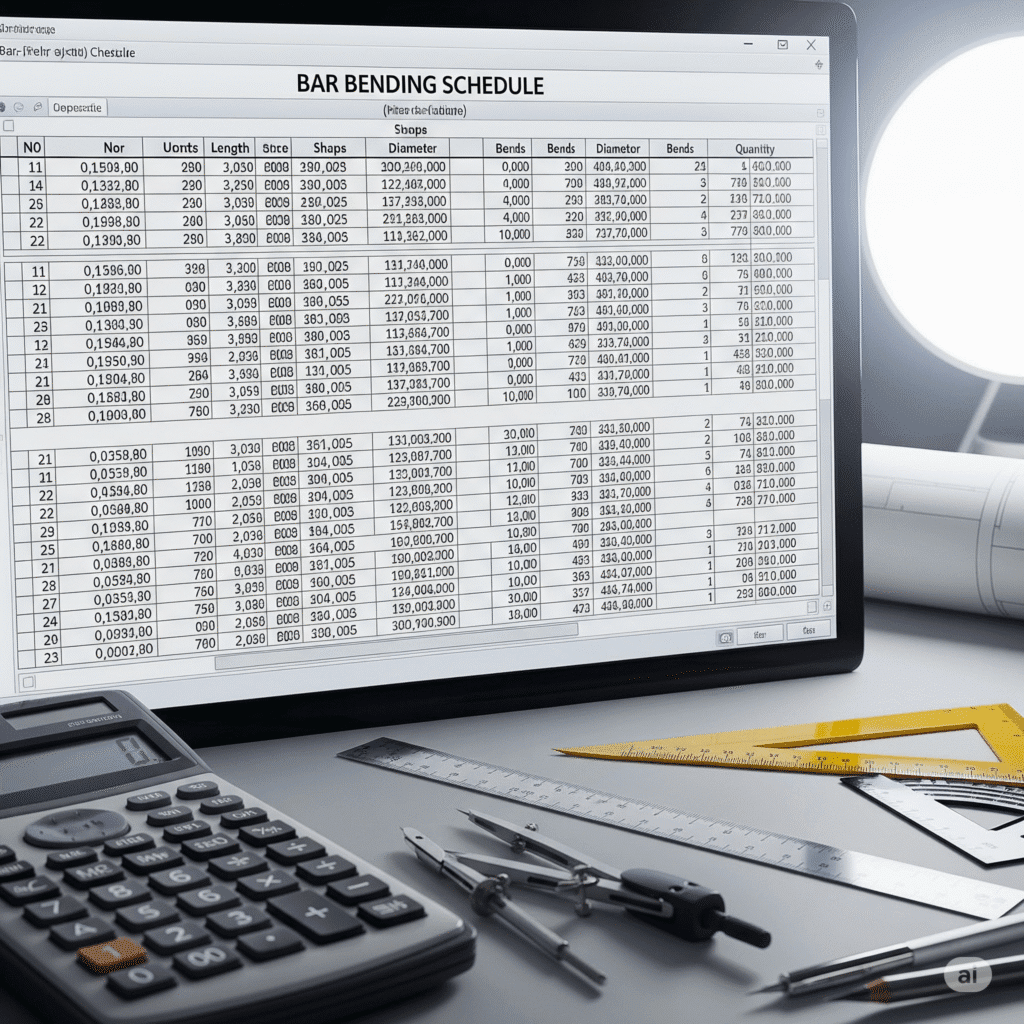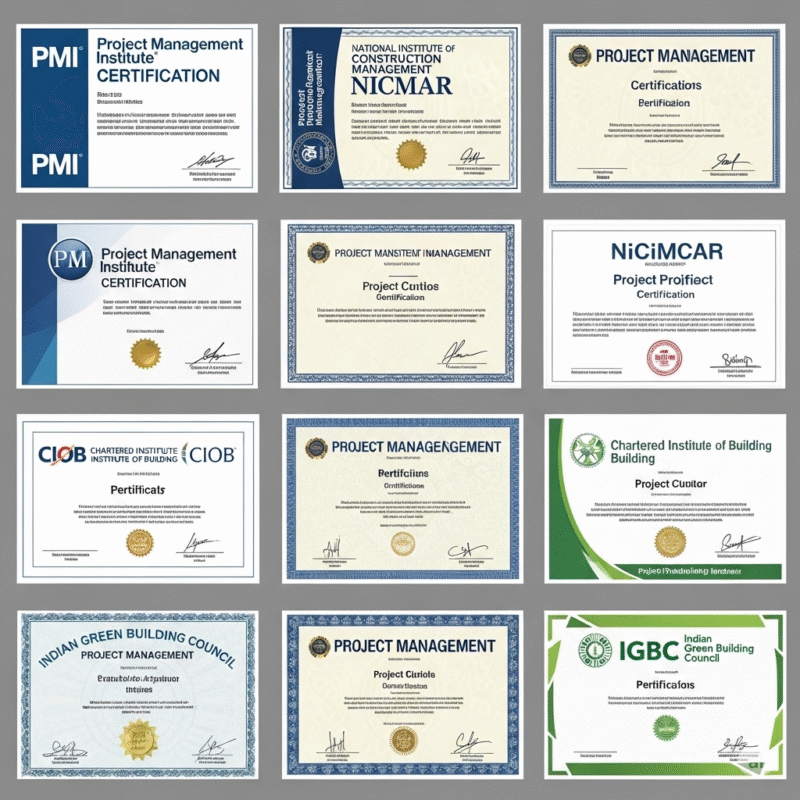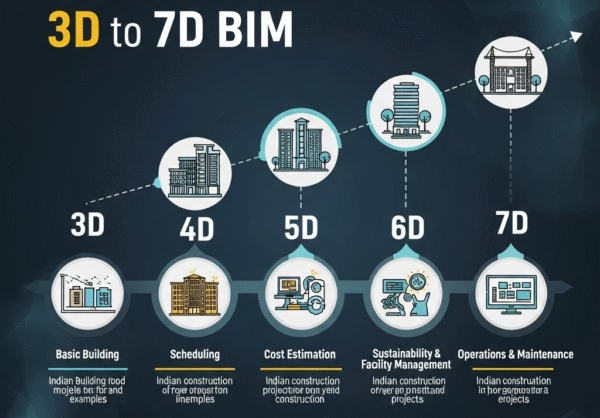Introduction
Steel reinforcement forms the backbone of modern concrete structures, and accurate quantity calculation is crucial for project success. Whether you’re a fresh graduate entering the construction industry, an experienced engineer, a real estate developer, or someone planning to build your dream home, understanding how to calculate steel quantities from structural drawings is an essential skill that directly impacts project costs, timelines, and structural integrity.
This comprehensive guide will walk you through the systematic approach to steel quantity calculation, covering everything from reading structural drawings to advanced automation techniques. By mastering these concepts, you’ll be able to prepare accurate estimates, minimize material waste, and ensure compliance with Indian Standards.
Who Should Read This Guide:
- Civil engineers and structural designers
- Quantity surveyors and estimators
- Real estate developers and project managers
- Construction contractors and site supervisors
- Architecture and engineering students
- Individual home builders planning construction projects
Key Methodologies & Processes
Understanding Structural Drawing Symbols
The foundation of accurate steel calculation begins with properly interpreting structural drawings. Beam markings like B1, B2, and B3 indicate different beam types, while bar callouts such as “8Ø@150c/c” specify 8mm diameter bars at 150mm center-to-center spacing.
Step-by-Step Steel Calculation Process
Step 1: Drawing Analysis Begin by identifying all structural elements – beams, columns, slabs, and footings. Note the reinforcement details, including bar diameters, spacing, and lengths specified in the drawings.
Step 2: Bar Bending Schedule (BBS) Preparation Create a systematic BBS with mandatory columns:
- Shape of reinforcement
- Bar size (diameter)
- Length of each bar
- Number of bars
- Total length
- Weight calculation
Step 3: Apply IS Code Standards Follow IS 2502:1963 for bending dimensions and IS 456:2000 for structural requirements. Standard hook lengths are typically 16 times the bar diameter for 90-degree bends.
Step 4: Calculate Development Lengths Development length (Ld) ensures proper bond between steel and concrete. For different bar types:
- Deformed bars in tension: 0.87 × fy × Ø / (4 × τbd)
- Plain bars: 1.3 times the above value
Unit Weight Formula Application
The fundamental formula for steel weight calculation is based on steel density of 7850 kg/m³: Weight per meter = D²/162 kg/m Where D is the bar diameter in millimeters.
Material & Manpower Requirements
Essential Materials
- Reinforcement steel bars (various diameters: 8mm, 10mm, 12mm, 16mm, 20mm, 25mm, 32mm)
- Binding wire (16-18 gauge)
- Chair blocks and spacers
- Cover blocks (plastic or concrete)
Labor Requirements
- Bar bending specialist (1 per 100 sq.m of construction)
- Steel fixer/rigger (2-3 per 100 sq.m)
- Helper/laborer (3-4 per 100 sq.m)
Machinery and Tools
- Bar cutting machine
- Bar bending machine
- Measuring tape and marking tools
- Digital weighing scale for verification
Deliverables at Each Stage
Pre-Construction Stage
Bar Bending Schedule (BBS): Detailed schedule showing shape, size, length, and weight of each reinforcement bar.
Material Procurement List: Comprehensive list of steel requirements with specifications and quantities.
Quality Assurance Plan: Testing procedures for steel quality verification including tensile strength and bend tests.
Construction Stage
Daily Progress Reports: Documentation of steel placement progress with photographs and measurements.
Quality Check Reports: Regular inspection reports ensuring compliance with drawings and IS codes.
Material Consumption Reports: Daily tracking of steel consumption versus planned quantities.
Post-Construction Stage
As-Built Drawings: Updated drawings reflecting actual steel placement and any modifications.
Material Reconciliation Report: Final comparison of planned versus actual steel consumption.
Compliance Certificates: Documentation ensuring all steel work meets IS code requirements.
Stakeholders & Communication Matrix
Key Stakeholders
Primary Stakeholders:
- Structural Engineer: Responsible for design and specifications
- Contractor: Executes steel work as per drawings
- Quantity Surveyor: Prepares estimates and monitors consumption
Secondary Stakeholders:
- Material Supplier: Provides steel as per specifications
- Quality Control Engineer: Ensures compliance with standards
- Project Manager: Coordinates overall execution
Communication Protocols
Weekly Progress Meetings: Review steel work progress, address challenges, and plan upcoming activities.
Quality Review Sessions: Monthly meetings to assess quality compliance and implement improvements.
Material Reconciliation Meetings: Bi-weekly sessions to track material consumption and adjust procurement plans.
Value Engineering Opportunities
Cost-Saving Techniques
Optimization of Bar Lengths: Utilize standard 12-meter bar lengths efficiently to minimize cutting waste. Plan cutting schedules to use off-cuts for smaller elements like stirrups and distribution bars.
Alternative Reinforcement Strategies: Consider using higher-grade steel (Fe 500 instead of Fe 415) to reduce steel quantities while maintaining structural integrity.
Bundling Optimization: Group similar diameter bars to reduce handling and placement time while ensuring compliance with IS 456 bundling rules (maximum 4 bars in contact).
Sustainable Alternatives
Recycled Steel Usage: Incorporate recycled steel bars that meet IS standards, typically available at 5-10% cost savings.
TMT Bar Advantages: Use Thermo-Mechanically Treated bars for better strength-to-weight ratio and corrosion resistance.
Prefabrication Approach: Consider off-site steel fabrication for complex elements to improve quality and reduce on-site waste.
Case Study: Residential Complex Project
Project Overview
A 10-story residential complex in Bangalore with a built-up area of 50,000 sq.ft required precise steel quantity calculation for cost optimization and timely execution.
Challenges Faced
- Complex beam-column junctions with varying reinforcement details
- Multi-level basement requiring specialized footing reinforcement
- Tight budget constraints requiring waste minimization
Solutions Implemented
Digital Modeling: Used Revit for 3D reinforcement modeling, reducing calculation errors by 15%.
Standardization: Developed standard reinforcement details for repetitive elements, improving efficiency.
Waste Management: Implemented cutting optimization charts, reducing steel waste from 12% to 6%.
Results & Key Takeaways
- Cost Savings: Achieved 8% reduction in steel costs through optimization
- Time Efficiency: Reduced BBS preparation time by 40% using automated tools
- Quality Improvement: Zero rework due to accurate quantity calculations
Risks & Mitigation Strategies
Common Risks
Calculation Errors: Inaccurate steel quantities leading to material shortages or excess inventory. Mitigation: Implement peer review process for all BBS calculations and use software validation.
Code Non-Compliance: Failure to follow IS code requirements for development lengths and spacing. Mitigation: Regular training on IS codes and mandatory quality checks at each stage.
Material Quality Issues: Substandard steel affecting structural integrity. Mitigation: Source materials from certified suppliers and conduct regular quality tests.
Preventive Measures
Risk Assessment Tools: Use project-specific risk matrices to identify potential issues early.
Quality Control Checklists: Implement standardized checklists for each construction stage.
Regular Audits: Conduct monthly technical audits to ensure compliance with specifications.
Detailed Calculations for Different Elements
Beam Steel Calculations

Main Bar Length Calculation: Length = Clear span + 2 × Development length (Ld) For a 6-meter span beam with 16mm bars: Ld = 16 × 47 = 752mm (as per IS 456) Total length per bar = 6000 + 2 × 752 = 7504mm
Stirrup Cutting Length: Formula: 2×(b+h) – 8×cover + 24d For a 300×500mm beam with 25mm cover and 8mm stirrups: Cutting length = 2×(300+500) – 8×25 + 24×8 = 1600 – 200 + 192 = 1592mm
Slab Steel Calculations
Main Reinforcement: Calculate based on structural requirements and spacing. Distribution Bars: Typically 0.12% of cross-sectional area for temperature reinforcement. Curtailment: 50% of bottom bars can be curtailed at 0.15L from supports.
Column Steel Calculations
Longitudinal Bars: Floor height + development length into footing + lap length for next floor Ties/Stirrups: Spacing should be minimum of 16Ø, 48 times tie diameter, or least column dimension
Advanced Techniques and Software Integration

AutoCAD Estimation Methods
Use the AREA command to calculate reinforcement areas and generate quantity reports directly from drawings.
BIM Integration
Leverage Revit’s reinforcement modeling capabilities for automatic quantity extraction and clash detection.
Excel Automation
Create standardized formulas for weight calculation:
=LENGTH*(DIA^2/162) for automatic BBS generation.
Quality Control and Best Practices
Site Implementation Guidelines
Cover Maintenance: Ensure proper cover blocks placement – 25mm for beams, 15mm for slabs, 40mm for footings.
Lap Splice Requirements: 50d for tension laps, 40d for compression laps as per IS 456.
Bundling Rules: Maximum 4 bars in contact, with proper spacing maintained.
Testing and Verification
Tensile Testing: Conduct tests as per IS 1786 for each lot of steel. Bend Testing: Verify bar ductility and quality. Weight Verification: Cross-check theoretical calculations with actual weights.
Conclusion & Further Reading

Accurate steel quantity calculation is both an art and a science, requiring thorough understanding of structural principles, code requirements, and practical construction considerations. By following the systematic approach outlined in this guide, construction professionals can ensure optimal material utilization, cost control, and structural integrity.
Key takeaways from this comprehensive guide include the importance of proper drawing interpretation, adherence to IS codes, systematic BBS preparation, and implementation of quality control measures. The integration of modern software tools and automation techniques can significantly improve accuracy and efficiency in steel quantity calculations.
For continued learning and professional development, consider exploring advanced topics such as seismic detailing requirements, high-rise construction reinforcement strategies, and emerging technologies in construction automation.
Recommended Further Reading:
- IS 456:2000 – Code of Practice for Plain and Reinforced Concrete
- IS 2502:1963 – Code of Practice for Bending and Fixing of Bars for Concrete Reinforcement
- SP 34:1987 – Handbook on Concrete Reinforcement and Detailing
- Advanced Concrete Technology by John Newman and Ban Seng Choo




